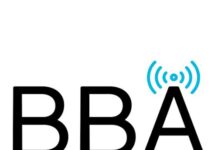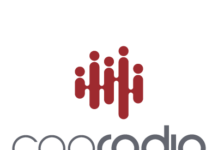
(By Bob McCurdy) Last week WARC’s (World Advertising Research Center) Admap — its monthly thought leadership report — focused on frequency in a paper titled, “Frequency: How much is too much?”
This topic has been debated for decades but with the increase in multi-tasking and ad avoidance, commercial “exposure,” the building block of frequency, might no longer be sufficient to count as an “impression.” In other words, in this ADD, fast-is-too-slow world, it likely takes more than one commercial exposure to count as being exposed.
While the report was frequency focused, reach was also addressed.
Report conclusions follow:
Responsible marketers should not get to the point where messaging becomes irritating. Instead, they should focus on the most efficient way to maximize reach.
Comment: Excessive frequency progresses in stages, accelerating from mere annoyance to irritation, to distress, to anger, and ultimately lost sales. Overdo frequency at your own or your client’s risk. Some re-targeting borders on this.
Plan for the first exposure to be the most effective and then plan for ad decay which reduces waste and maximizes spend.
Comment: The Law of Satiation states that the first impression is more impactful than the second or third, etc. It’s the same reason why the first bite of anything always tastes best. Strive for as many “first impressions” as possible, which speaks to “reach” and a mix of media. Some ad decay is to be expected and welcomed, due to limited budgets and the fact that advertising does have a carryover effect. Always schedule commercials such that there is some “time gap” between exposures for maximum payback.
Byron Sharp’s work has proved that reach is a critical measure. In his words, “Reach is more important than frequency of exposure, continuous advertising is more effective than bursts followed by long gaps.”
Comment: “Bursts” of commercial messaging followed by “gaps” in messaging leads to dangerous levels of ad decay, as without “reinforcement” (exposure), commercial impact eventually declines until any positive influence as a result a previous commercial exposure all but disappears. Long ad gaps limit sales.
It also becomes harder to deliver that reach in channels with declining mass audiences.
Comment: Speaks to the importance of a mix of media, as every medium has its heavy and light users. Different media help insert a commercial message into a buyer’s life in different contexts and locations. But radio’s reach, unlike other media, is not declining.
Reach today is achieved through multiple media, and optimal platforms may change as a campaign progresses.
Comment: True. There does come a point when the next ad dollar could be better spent in another medium. For instance, use TV in the “introductory” phase then segue to radio during the “sustaining” phase. Several Ear vs Eye studies — conducted some years back but still completely valid — confirm that there is indeed a point in many television campaigns when radio can deliver the same marketing wallop as a television commercial. The first study can be found here. The second here. Both are worth a few minutes of review.
If you focus on the most efficient way to maximize reach, then frequency becomes a data point to be understood in the context of diminishing returns for your brand.
Comment: Viewing “reach and frequency” instead through a “reach and continuity” lens transforms frequency into something more valuable, continuing brand “presence/visibility.” Avoid ad “bursts” followed by ad darkness. Opt for consistency of advertising, even at smaller GRP levels. Products with extremely limited or no “mental availability” are rarely purchased.
When properly implemented, “frequency capping” can bring long-term benefits such as better consumer engagement and brand loyalty.
Comment: Digital media can cap frequency more effectively than radio but there are still ways for us to address this issue:
- Airing messaging across as many dayparts/days as possible will not only lead to a more consistent frequency of exposure but maximize reach as well.
- Lighter commercial loads across more stations, rather than heavier across fewer, prevents the piling up of excessive frequency.
The expected level of ad avoidance should have an influence on how each channel is planned.
Comment: Radio is not exempt from ad avoidance behavior, though a “guerilla” mindset can assist in minimizing it. “Guerilla” in terms of existing outside the normal rules of commercial engagement, working to seize listeners’ attention when and where they least expect it, via short form messaging, multiple creative executions, bookends, and episodic creative executions can all assist in minimizing commercial avoidance. The most effective antidote to commercial avoidance, though, is better creative. The most expensive cost in advertising is running creative that doesn’t work.
Keeping on top of insights into frequency of exposure, time decay between exposures, repetition, and wear-out across platforms enables a greater chance of optimal frequency being achieved.
Comment: Each ad impression costs the same, but close-together, repeat impressions return less revenue; so repeat impressions against the same individual within a short time-frame generates fewer sales than reaching another new potential customer. Avoid “clumping” of exposures within dayparts, days, or listeners.
It’s a jungle out there and there’s no single, one-size-fits-all frequency rule, as so many factors impact the ideal amount: the complexity of messaging, ad decay, wear out, the quality of creative, micro and macro-economic conditions, competitive ad spend, clutter, previous spending history, etc. But keeping the above in mind when discussing optimal scheduling with clients can assist us in making better recommendations that deliver a greater payback.
Bob McCurdy is Vice President of Sales for the Beasley Media Group and can be reached at [email protected].






Great post as usual! More clutter means you need less frequency? More reach? I think that kind of thinking ultimately opens a lot of opportunities to better serve our clients.
Thank you for sharing.
Doug
Straight-up work, Bob – worthy of deep consideration.
“Better creative”, you say?
My head hurts.
“I’m goin’ to go lie down on the couch.” – Dean Martin